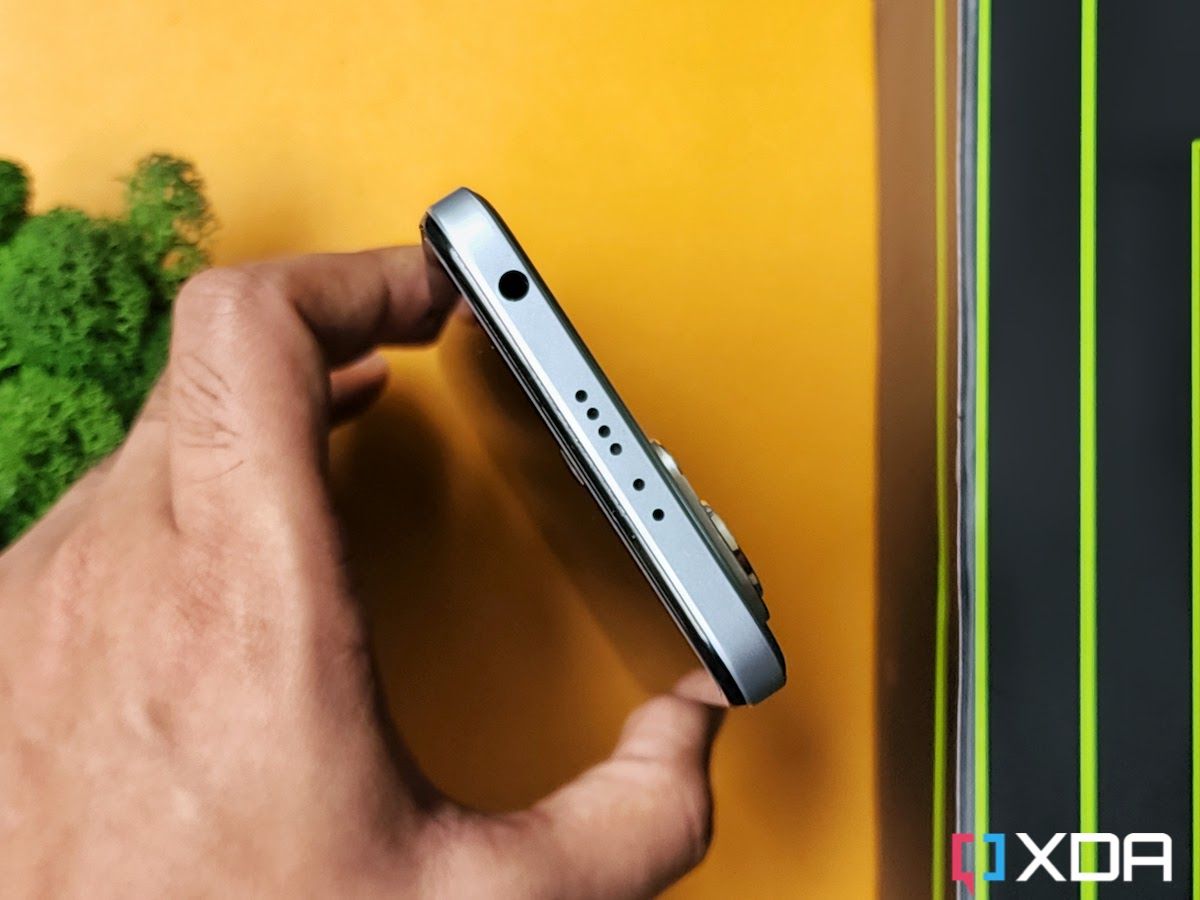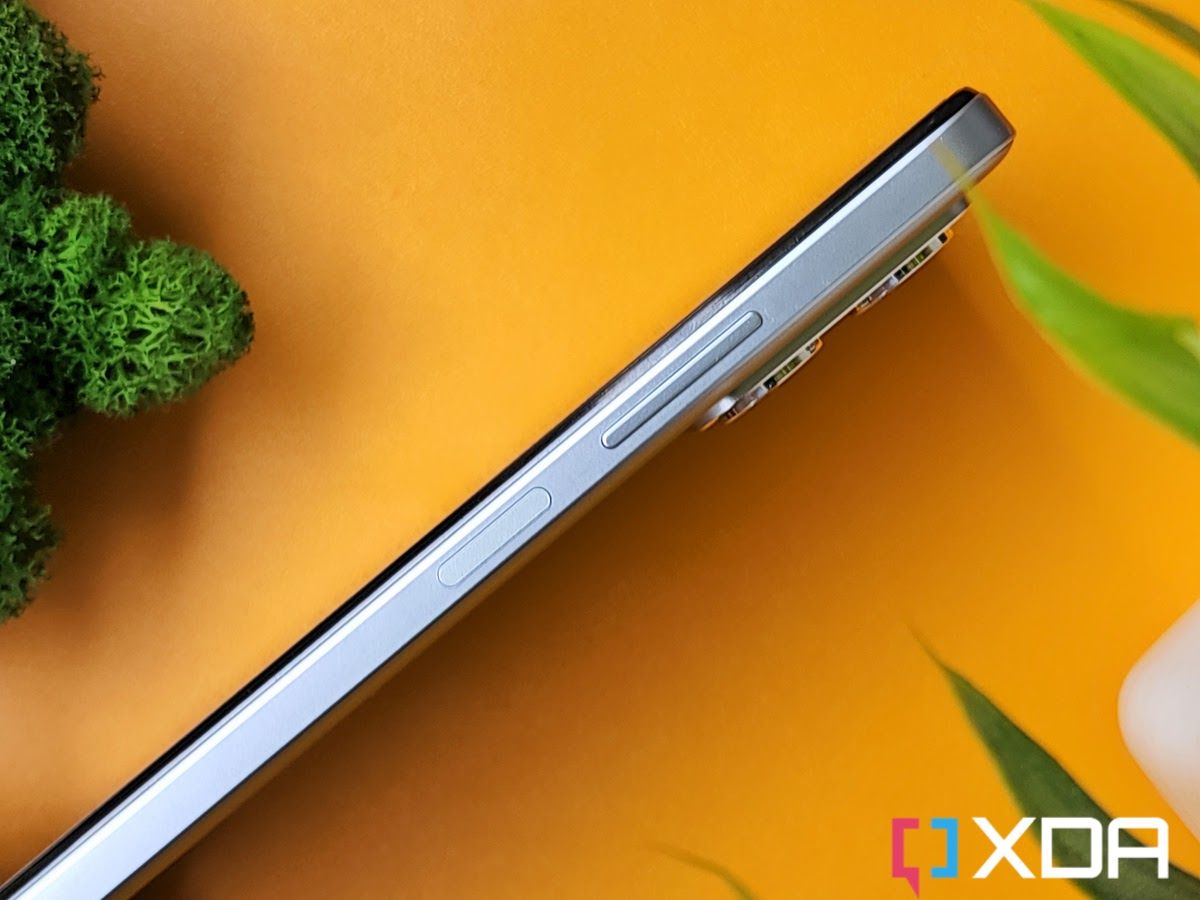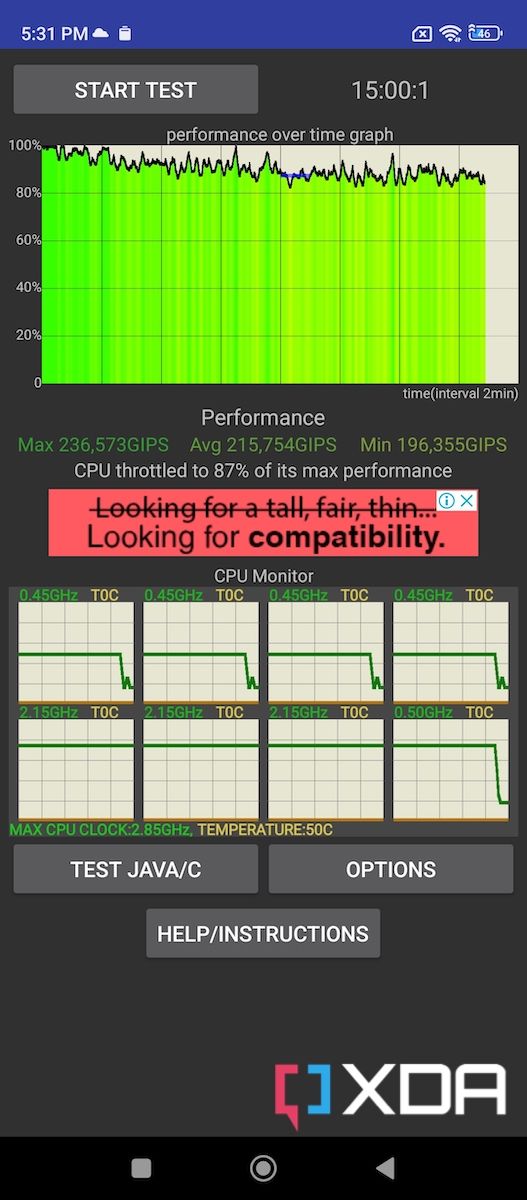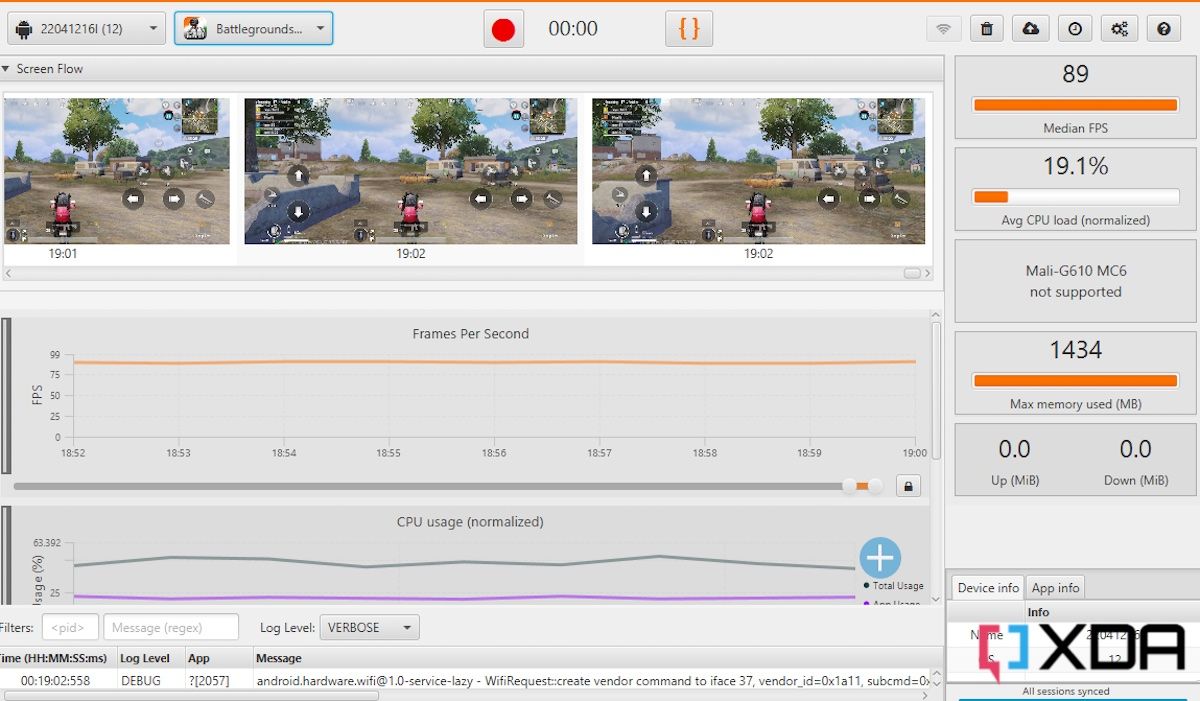Redmi K50i Review: Lightning-fast performance at a low price
The Redmi K50i is the latest phone in the K-series that’s titanically popular in India and beyond. This particular smartphone is a spiritual successor to the Redmi K20 Pro that debuted back in 2019. As is tradition for the K-series phones, the new Redmi K50i brings some powerful internals at an affordable price. There’s a lot to like about the Redmi K50i but its performance is the main attraction here and the phone cuts through tasks like a hot knife through butter.
The 6.6-inch 144Hz FFS LCD with a 270Hz touch sampling rate coupled with the octa-core Dimensity 8100 chipset makes the Redmi K50i a fantastic smartphone for gaming. It’s been fast and reliable with everything I’ve thrown at it, so I have no complaints with the general performance of this phone outside gaming too. The Redmi K50i also packs a massive 5080mAh battery which also charges fairly quickly thanks to the 67W charger that’s bundled with the phone. The Redmi K50i isn’t competing with high-end competitors to get everything right. Instead, it follows the basic ‘Redmi’ formula of offering a good set of specs at a low price for the masses.
If that sounds like something you’re interested in buying then I’ve got a lot more details about the phone in this Redmi K50i Review. Read on to find out if it’s worth picking up for you in 2022.
- The Redmi K50i offers an incredible value for money with its stellar performance, a fast 144Hz LCD panel, and a long-lasting battery. Some other noteworthy features of the phone include a 3.5mm headphone jack and an IR blaster. You can check some other alternatives out there, but we think nothing comes close to matching the general performance of the Redmi K50i, at least in this price range.
|
Features: |
|
|
|
Pros: Cons: |
Navigate this Review:
- Pricing and availability
- Specifications
- Design and display
- Performance and software
- Cameras
- Battery life
- Should you buy it?
Redmi K50i Review: Pricing and Availability
- The Redmi K50i starts at ₹25,999 (~$325) for the base variant in India.
- You can buy it in Phantom Blue, Quick Silver, or Stealth Black colorways.
It’s no secret that Xiaomi rebrands a lot of its smartphones with a different marketing name for different regions. Similarly, the Redmi K50i is a rebranded Redmi Note 11T Pro, featuring the same hardware. It’s indistinguishable from the Chinese model as Xiaomi hasn’t made any changes to its design either. The same phone is also being sold as the Poco X4 GT internationally, so it’s making rounds around the world with a different name. It’s not a deal-breaker, but it’s something you should be aware of in case you’re planning to buy this phone.
The Redmi K50i is a rebranded Redmi Note 11T Pro, which is also sold as the POCO X4 GT globally.
As for the pricing, the Redmi K50i starts at ₹25,999 (~$325) for the variant with 6GB RAM and 128GB storage in India. The 8GB+256GB model will cost you ₹28,999 (~$363). The phone has gone on sale starting July 23 and you can buy it in either Phantom Blue, Quick Silver, or Stealth Black colorways.
Redmi K50i Review: Specifications
Let’s take a quick look at the specifications to find out what the Redmi K50i brings to the table:
| Specification | Redmi K50i / Redmi Note 11T Pro / Poco X4 GT |
|---|---|
| Build |
|
| Dimensions & Weight |
|
| Display |
|
| SoC |
|
| RAM & Storage |
|
| Battery & Charging |
|
| Security | Side-mounted fingerprint scanner |
| Rear Camera(s) |
|
| Front Camera(s) | 16MP |
| Port(s) |
|
| Audio | Dual stereo speakers |
| Connectivity |
|
| Software | MIUI 13 based on Android 12 |
| Other Features |
|
About this Review: Xiaomi India sent us the Redmi K50i unit in Quick Silver colorway for testing. This review was written after spending about a week with the device. Xiaomi had no input in this review.
Redmi K50i Review: Design and Display
- The Redmi K50i is entirely made of plastic, but it has Gorilla Glass 5 on the front.
- It comes with a 3.5mm headphone jack and an IR blaster on the top.
The Redmi series has established its own design language, so the Redmi K50i brings a very familiar design to the market. The handset has a boxy design and is entirely made of plastic. The back panel mimics the look of frosted glass and it seems to repel smudges and fingerprints. The Quick Silver variant which I’ve been using for the last few days, however, has developed a weird-looking spot at the back. It looks more prominent in the photos, and I can’t seem to get rid of it. This issue could be exclusive to my unit, but it’s worth making a note of. The back is almost completely flat but the camera island sticks out quite a bit, and the lenses protrude even further. This makes the device wobble when placed on a flat surface.

The right side of the phone has a volume rocker and a power button which doubles up as a rather reliable side-mounted fingerprint scanner. The USB-C port is at the bottom and it’s flanked by the SIM card tray and speaker grille on both sides. The top also has a bunch of grills which serve as an echo chamber for the left channel speaker. But it’s the 3.5mm headphone jack and the IR blaster that grabs the attention on the top as both of these are rarely seen on any smartphone these days.



Overall, the Redmi K50i is a fairly decent-looking phone. It’s not winning any awards with its muted design, especially when you compare it with the K20 series’ scintillating design with a gradient finish. The Redmi K50i is also not as thin or light as it appears in the press renders and images. It’s 8.87mm thick and weighs 200g, so it is a sizable phone to carry around. It comes with IP53 certification, so it should hold up pretty well against dust and occasional water sprays.
The screen is a 6.6-inch FHD+ LCD panel with a slight chin at the bottom and a punch-hole cutout for the selfie camera on the top. Not that LCD panels are bad by any means, but Xiaomi made it a point to emphasize the fact that the Redmi K50i sports a fringe-field switching (FFS) LCD which offers many benefits including low operating voltage, wide-viewing angle, and fast response times compared to other LCD types. In real life, the FFS LCD looks similar to the standard LCD panels used on many phones these days. You’re not going to see impressive contrast ratios or inky blacks as you would on an OLED panel, but there’s still a lot to like.

Redmi K50i's display boasts a rather exhaustive list of features

The Redmi K50i has a good display overall but I just wish it was a little brighter. With 500 nits of peak brightness, it doesn’t get nearly as bright as some other phones out there, making it less visible outdoors, especially under direct sunlight. The phone also doesn’t support HDR playback from popular OTT platforms like Netflix too, so keep that in mind.
Redmi K50i Review: Performance and software
- The Redmi K50i is powered by the MediaTek Dimensity 8100 chipset and it comes with LPDD5 memory and UFS 3.1 storage.
- This is the best-performing phone in this price range with barely any competitors in sight.
The Redmi K50i is powered by MediaTek’s Dimensity 8100 chipset, and I have absolutely no complaints about its performance. The base variant of this phone comes with 6GB of LPDDR5 memory and 128GB of UFS 3.1 storage, but you can also splurge more to get the variant with 8GB of memory and 256GB of storage. The Dimensity 8100 is a reliable chipset that’s running the show behind the scenes for many devices, and the Redmi K50i takes full advantage of the CPU chops to become one of the fastest phones in its segment.
One of the best things about the Redmi K50i is that it doesn’t heat up even under sustained load thanks to the Liquidcool 2.0 technology. And because of this, the Redmi K50i performs admirably well to score good numbers in benchmarks and also delivers a fantastic gaming experience. It maintains 87% of its peak performance in the CPU throttle test and was also able to finish 3DMark’s Wild Life Extreme stress test without getting unbearably hot as some other phones do. Here’s a quick look at some benchmark numbers for those who care about a phone’s performance across benchmarking apps:




All your day-to-day apps run extremely smoothly on this phone. You can expect to see snappy animations and buttery smooth scrolling which isn’t exactly commonplace in the budget category. You can thank the hardware — and likely software too — for delivering a lightning-fast performance for all your day-to-day activities.

Gaming on the Redmi K50i is also a treat thanks to the reliable performance and 144Hz display. The device is powerful enough to run even the most demanding titles at competent graphics settings with high frame rates on the board. Popular mobile games like Battlegrounds Mobile India (Indian version of PUBG Mobile) and Apex Legends Mobile can run at max graphics settings without a hitch. I also tried a bunch of games that support a 144Hz refresh rate, and it was a smooth experience through and through. Games like Dead Trigger 2, Alto’s Adventure, and Real Racing 3 run smoothly at 144Hz, and the Redmi K50i continues to run them smoothly over an extended period.
The Redmi K50i is powerful enough to run even the most demanding titles at competent graphics settings with high frame rates.


We would like to give special thanks to the team at GameBench for the tool they provided us. Their tool makes it possible for any person, whether it be a regular user, journalist, or engineer, to test a mobile game’s performance on an Android device. Check out GameBench to learn more.

As for the software, the Redmi K50i runs MIUI 13 out of the box. It’s based on Android 12 and offers a plethora of customization options. Xiaomi’s MIUI has evolved a lot over the years and it also offers some under-the-hood improvements now such as better CPU utilization, better RAM management, and more. I am not a huge fan of heavy custom skins on top of Android, but MIUI is very easy to get used to. Some features like the split between notifications shade and control center are a bit niche, but it’s a very welcoming UI otherwise. You get a bunch of pre-installed applications out of the box, but most of them can be uninstalled and they don’t hinder the performance of the phone whatsoever.
Cameras
- The Redmi K50i sports a triple camera setup at the back which includes a 64MP Samsung GW1 primary sensor, an 8MP ultra-wide camera, and a 2MP macro shooter.
- The phone captures decent photos during the day but starts to struggle with low-light photos and videos.

The Redmi K50i sports a triple camera setup at the back which includes a 64MP Samsung GW1 primary sensor, an 8MP ultra-wide camera, and a 2MP macro shooter. Again, the Redmi K50i isn’t competing with high-end competitors, so I suggest you keep your expectations in check. I was able to capture a bunch of photos in both daytime and low-light conditions, and the results are broadly satisfying. The images, as you can see below, look sharp and have a good amount of detail provided there’s enough light in the scene.
Both the exposure and dynamic range were on point across all the daytime samples I captured with the phone. The primary sensor was also quick to focus, meaning you can rely on the Redmi K50i to capture some moving subjects. The ultra-wide images didn’t turn out as sharp as I’d like, but the overall image still looked pretty good. The secondary sensor offers a nice 120-degree FoV to capture more of the scene, so it’s nice to get a different perspective. Keep in mind that the Redmi K50i doesn’t have a telephoto camera, which means you’ll have to rely on digital zoom as opposed to optical. However, you do get a 2MP macro sensor, which works as advertised to get a quick close-up shot of a subject.
Low-light photos from the primary sensor are decent at best. The images aren’t too bad but I noticed that the phone overexposed many of the shots captured in low light. And the phone’s built-in night mode also does very little to add more details to the images. Both the ultra-wide and the macro camera also struggle to capture good-looking photos in low light, so keep that in mind.
The Redmi K50i packs a 16MP selfie camera that sits on the punch-hole cutout on the front. The selfies will turn out sharp with enough details on the subject’s face. You also get to see natural-looking skin tones, which is always a good sign. Here’s a quick look at some camera samples I was able to capture using the Redmi K50i during my time with the device.
The Redmi K50i can capture 4K videos at 30FPS using the rear camera setup. You’ll have to switch to 1080p resolution to record 60FPS footage.
Redmi K50i Review: Battery Life and Charging
- The Redmi K50i’s 5,080mAh battery will keep the lights on for at least a day and a half with moderate usage.
- The phone also comes with a fast-charger in the box that can quickly top up the phone.
The Redmi K50i packs a 5,080mAh battery inside which is bigger than what you get with a lot of smartphones these days. This massive battery adds to the overall thickness and the weight of the phone, but it offers reliable battery backup. The battery life was solid, lasting me about a day and a half with what I’d describe as moderate usage. If you only use your phone for basic activities like scrolling through social media apps, taking a bunch of phone calls, and watching some videos on YouTube or Instagram, then you should be able to get a similar battery backup.

On the days with heavier usage, especially when I played a bunch of games, ran benchmarking apps, and shot a lot of camera samples for the review, the phone would still comfortably last me through the day with more than 5 hours of screen on time.

Redmi also bundles a 67W charging brick with the phone which I’d say is very quick to charge the device. If you ever run out of battery during the day, then you can get up to a 50-percent charge in just 30 minutes. The phone doesn’t support wireless charging, but that’s not necessarily a deal-breaker in this price range.
Should you buy the Redmi K50i?

For a starting price of ₹25,999 in India, the Redmi K50i delivers an excellent budget Android phone experience. You get a zippy 144Hz FFS LCD panel, a MediaTek Dimensity 8100 chipset with reliable performance, a long-lasting battery with a fast charger inside the box, and more. Xiaomi has made some sensible sacrifices, so you don’t get all the bells and whistles. But there’s no denying that the Redmi K50i offers the best value for money. It’s perfect for those who are looking to buy a reliable device to get features and performance that — in many ways — is similar to many other upper mid-rangers or flagships too. You also get 5G support, which you’d need if you’re planning on keeping the phone for a few years.
The Redmi K50i delivers an excellent budget Android phone experience.
You should buy the Redmi K50i if:
- You’re looking to buy an affordable smartphone and don’t want to compromise on performance.
- You want to play mobile games at high frame rates.
- You want a phone with a long-lasting battery and fast charging support.
You shouldn’t buy the Redmi K50i if:
- You want a phone with an OLED display. The Redmi K50i comes with an FFS LCD panel which looks exactly the same as any other LCD type in the real world.
- You want your phone to stand out from the others with its design. The Redmi K50i follows the same language as many other Redmi phones and has a fairly muted design, unlike the Redmi K20 Pro that came out in 2019.
- You want a phone with a close-to-stock Android experience.
The Redmi K50i is arguably the best phone out there if you want the absolute best performance in this price range. But the Redmi K50i isn’t competing with the big players, and it’s not without its flaws. If you’re looking for some alternatives in India, then you can look at other options including the Moto Edge 30 with a Snapdragon 778G+ 5G or the Mi 11i Hypercharge. The POCO F4 is also a great alternative to consider for ₹27,999 if you can find it in stock.
- The Redmi K50i offers an incredible value for money with its stellar performance, a fast 144Hz LCD panel, and a long-lasting battery. Some other noteworthy features of the phone include a 3.5mm headphone jack and an IR blaster. You can check some other alternatives out there, but we think nothing comes close to matching the general performance of the Redmi K50i, at least in this price range.
So, are you interested in buying the Redmi K50i? Let us know by dropping a line in the comments below.
The post Redmi K50i Review: Lightning-fast performance at a low price appeared first on XDA.
from XDA https://ift.tt/eQDNG2p
via IFTTT


Aucun commentaire: